The word juggernaut refers to the Jagannath Rath Yatra at Puri. Car festivals connected with temples have been part of lore in India. Many temples had their own cars, and these were exclusively used for an annual procession. The bigger cars would only be used on a yearly basis, while the smaller ones would be used often. The deity in the temple is considered to be the boss of the town/village. Therefore, it would be carried around in the huge wooden-car at the time of the annual festival.
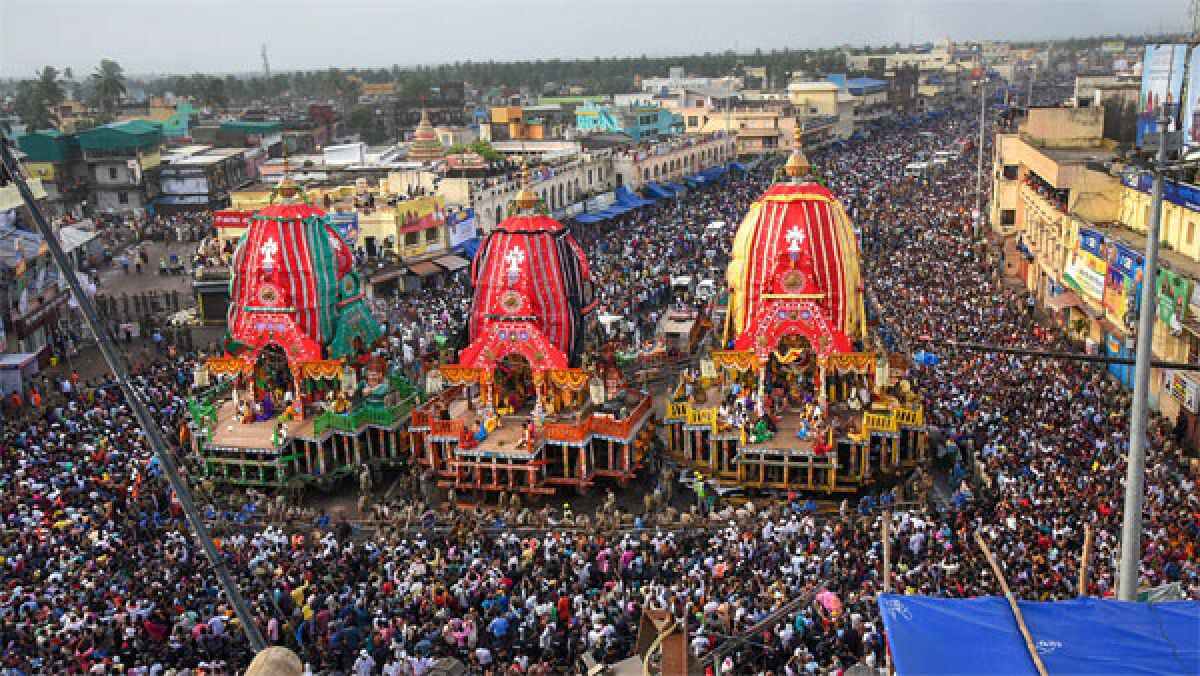
These cars were known as ther or rath in Tamil/Hindi, respectively. Some of the temples were endowed with huge wooden cars and these cars were made mobile with the aid of large wooden wheels. A team of people would help in the navigation and a large group of volunteers would pull the temple car through the streets. It was considered to be lucky to touch the temple car ropes. The caparisoned temple car would stop at a number of points and people would offer some prasad, aarti and flowers to the deity. Special ropes and pulleys would be used to draw the items to the deck of the temple car.
These wooden cars were crafted by master craftsmen. The images found in the car would be drawn from the epics and stories connected with the deity in the temple. The bottom of the car would resemble a V, which is flat at the bottom. Contributing towards the construction of the temple car was considered being an act of enormous merit. All the temple cities had a special pathway for the purpose of taking the temple car around. These streets were known as North/South/East/West Car Street or Rathaveedhi in Tamil.
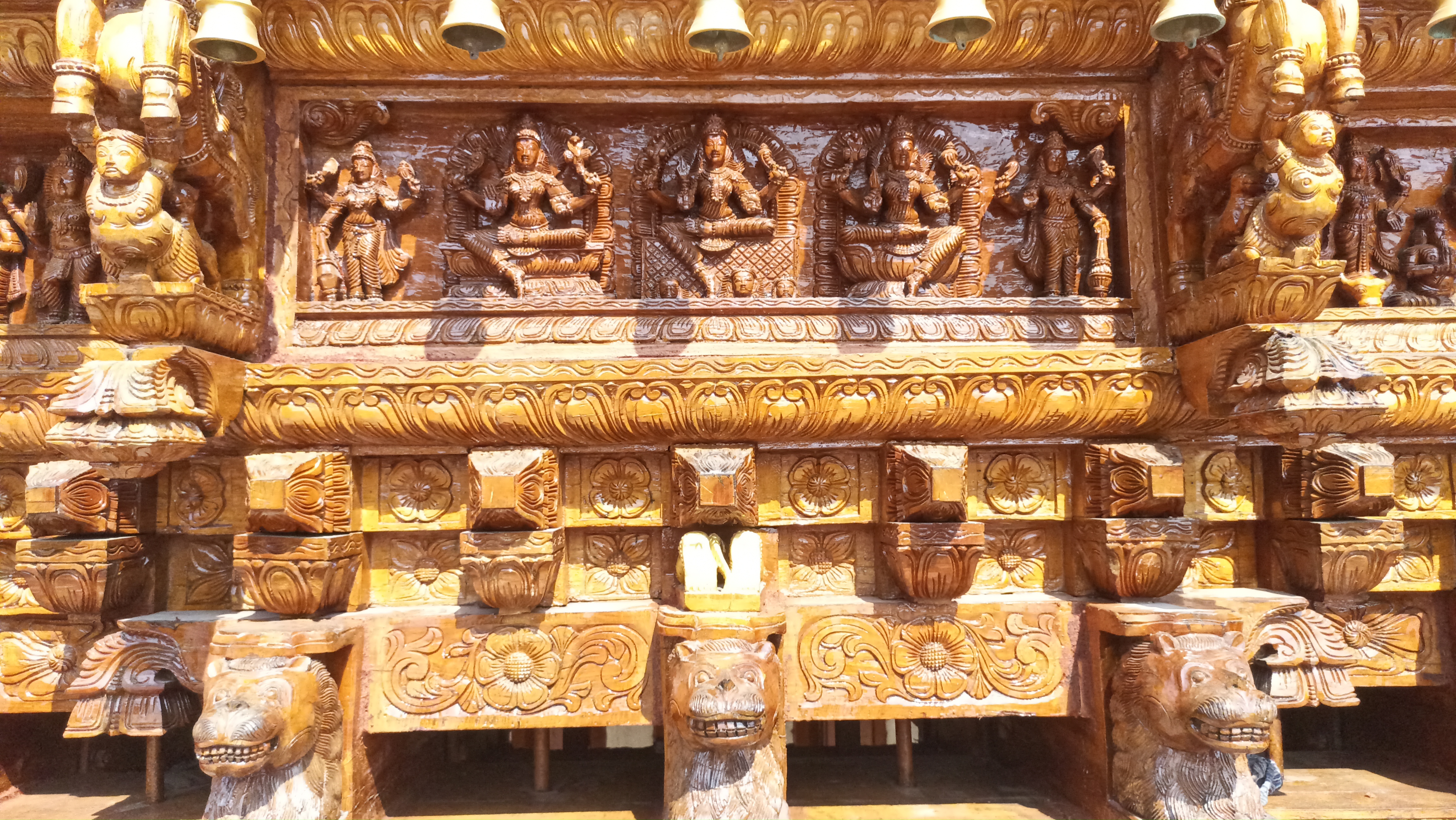
A large platform would be right next to the temple car and one could access this platform through a flight of steps. Some of these platforms would be beautifully designed. The Thiruvarur Thyagesar Temple Car is the most popular in Tamil Nadu. The Kalpathy Car Festival continues to be extremely popular. Hundreds of natives belonging to Kalpathy live abroad these days and they use the car festival as an opportunity to visit the village.
These car festivals promote a lot of friendship, fellowship between people. Everybody is equal in front of the deity. The famous Tamil proverb, “Oorkoodi ther izhukaradhu” (The whole town gets together to pull the temple car) is used to denote the role of the city’s populus in every public task. Therefore, this denotes importance and connects with the car festivals in the Indian society from time immemorial.
ISKCON has taken these car festivals around the world. Today, the Jaganath Rath Yatra is perhaps the most celebrated car festival in the world. These car festivals provide a platform for cultural commerce while also showcasing the benefits that may accrue due to public unity. Our elders have been wise enough to create events like car festivals in order to make everyone understand the power of joint efforts. Nowadays, we find people giving a call through social media in aid of public causes, but the Indians of yore have been practicing the same for thousands of years with the aid of the grand car festivals. The thiruvizha or the car festival or rath yatra have been keeping public interest in unison since time immemorial. The Koniamman Car Festival is one such event wherein public display of unity and devotion have kept the people of the city, Coimbatore, on a progressive path.
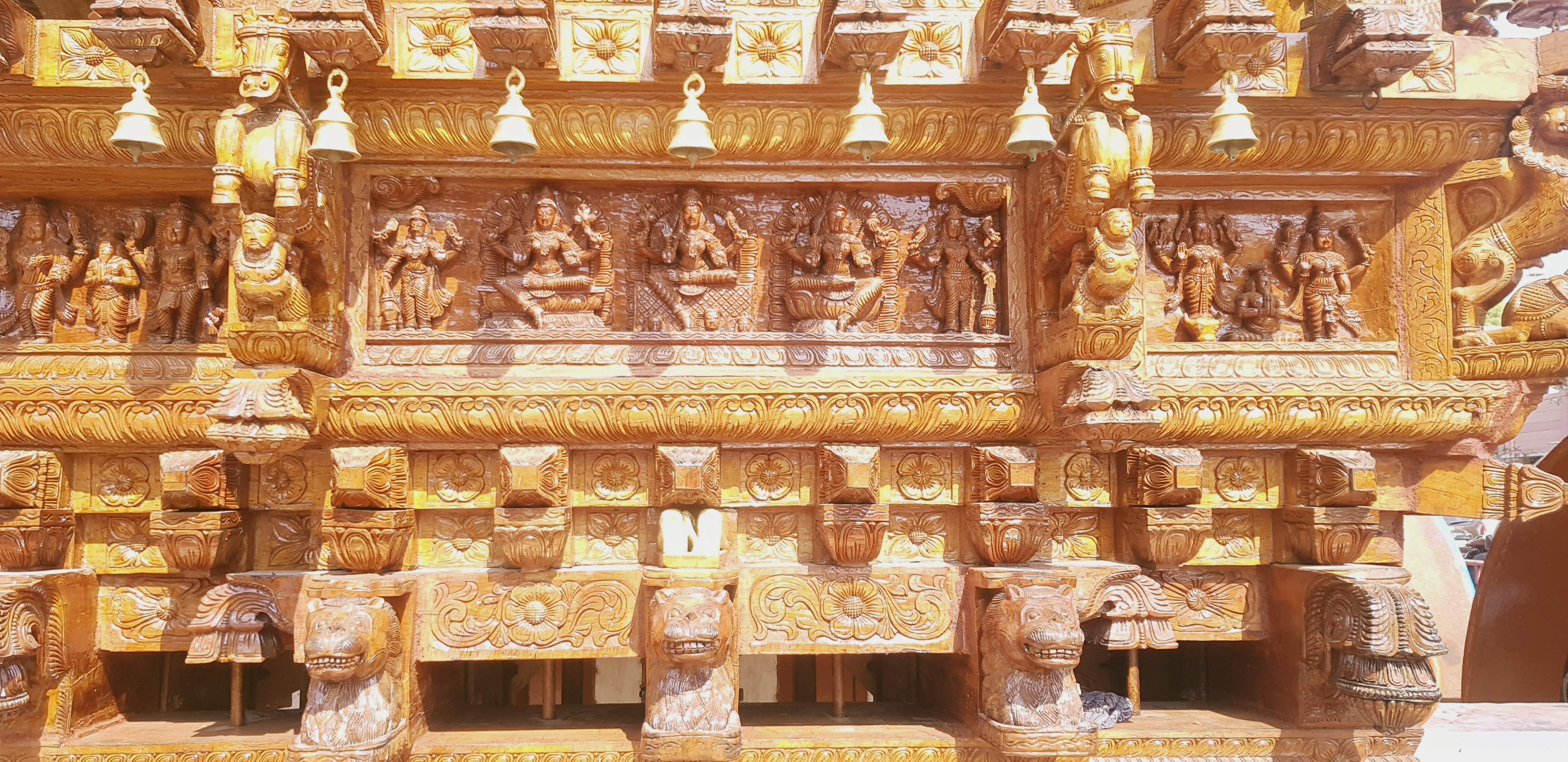
Koniamman is the guardian deity of Coimbatore. She is one of the nine sisters who hav3 been protecting Coimbatore for ages. The others are Mahakaliamman (Poomarket), Bhadrakaliammam (Thuraiyur Veedhi), Draupadiamman (K. G. Street), Vasavi Kannikaparameshwariamman (Vysial Street), Kamakshiamman (Big Bazar Street), Sowdamman (Raja Street), Dandumariamman (Avanashi Road), and Ankala Parameshwariamman (Vysial Street).
Long ago, Irula tribe ruler Kovan prayed to this goddess, and it was a time when the city was engulfed by forests. This was due to the proximity of the western ghats. The River Noyyal used to flood the region during the time of the monsoons. Those were the days when Roman merchants visited the region in search of agricultural implements, gems and cotton textiles. The export surplus came in the form of gold and silver coins. People believed that the silver would ward off evil sights and intentions and keep the wearer safe from the effects of witchcraft. Centuries later, Adithya Chola (875–907 A. D.) took over the Kongu country and Coimbatore, which was known as Kovanpadhy/Kovanpudhur, came under his care.
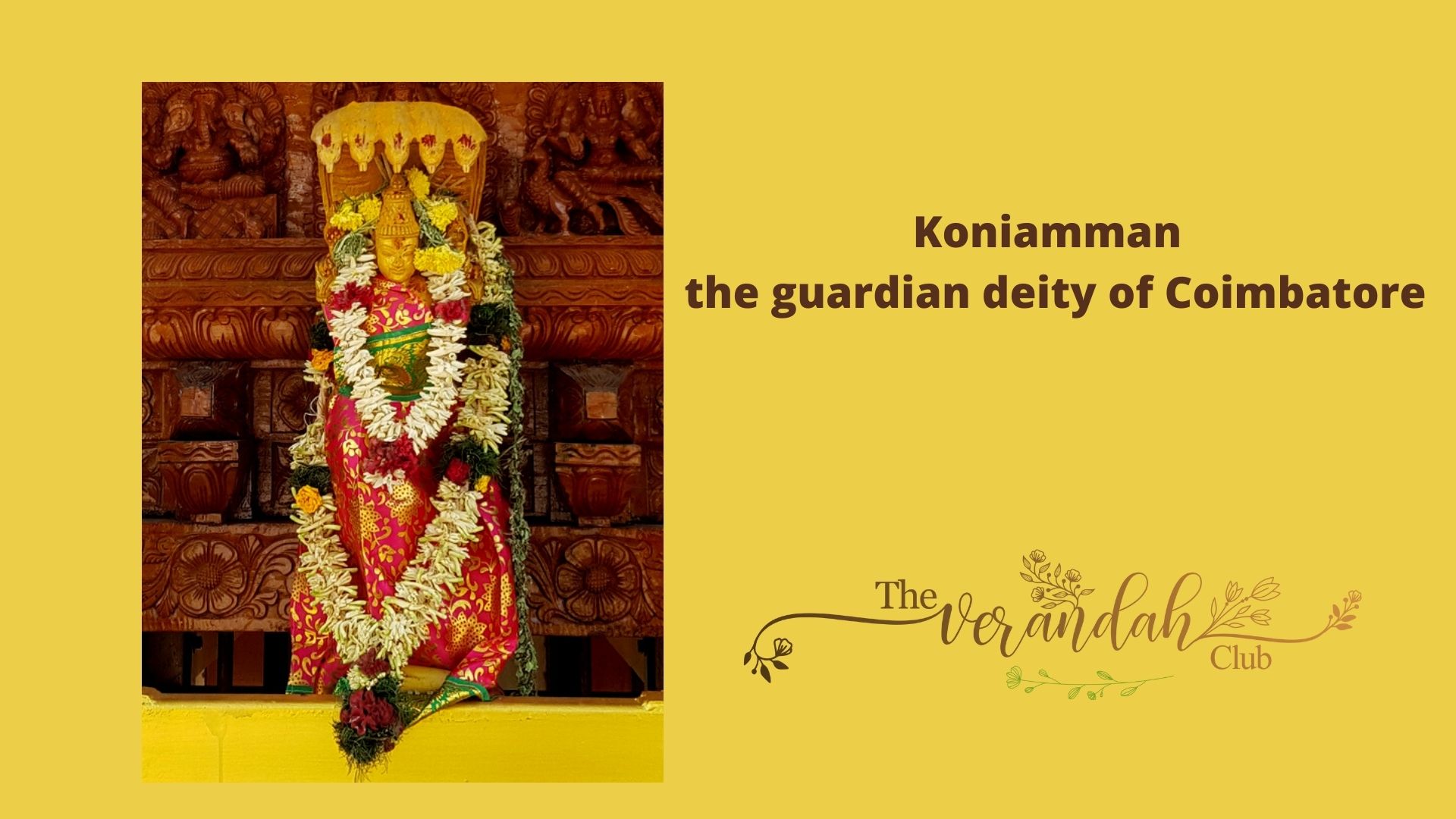
The Noyyal River Civilization began to flourish with the construction of a temple for Goddess Koniamman. A number of water bodies like the Ukkadam Kulam came in handy for the people and they began to prosper. The float festival for Koniamman used to take place on the temple tank which was located on the opposite side of the temple. It had to be closed due to the advent of plague and the festival began to be held at the Raja Street Venugopala Krishnaswamy Temple Theppakulam (temple tank) .
Goddess Koniamman is a form of Devi Durga Mahishasuramardhini who is known as Selva Raja Rajeswari, the bestower of wealth and fortune. Interestingly, Koniamman takes the name by virtue of being the deity who protected the ruler and the rule & The Koniamman Ther Thiruvizha or the ear Festival is an important annual event which brings the full city together. The Goddess lived in the fort area and the temple car was located at 'TherMutti on Raja Street. The four streets which are frequented by the deity are Raja Street, oppanakara Street, Vysial Street and Karuppa Gounder Street (KG Street). Most of the cities have Vadukkuratha Veedhi (North C Street) icing of name but Coimbatore is not thus endowed.
The Car Festival, Chaattu and Thirukalyanam are important events. Most of the women in the city visit the temple at the time of the Chaattu and offer their prayers. The temple will be full of women cutting across all sections of the society. Turmeric, vermillion, glass bangles, etc., would be the order of the day. People used to visit therrmutti (the place for the temple car) on Raja Street from the morning of the Car Festival Day. A lot of salt would be offered to the deity. The Thermutti is usually decked and painted just before the festival. The family ofV.S.Sengottiah has been getting it done for a long time. His great grandsons Sengottian and Raja have been continuing the tradition.
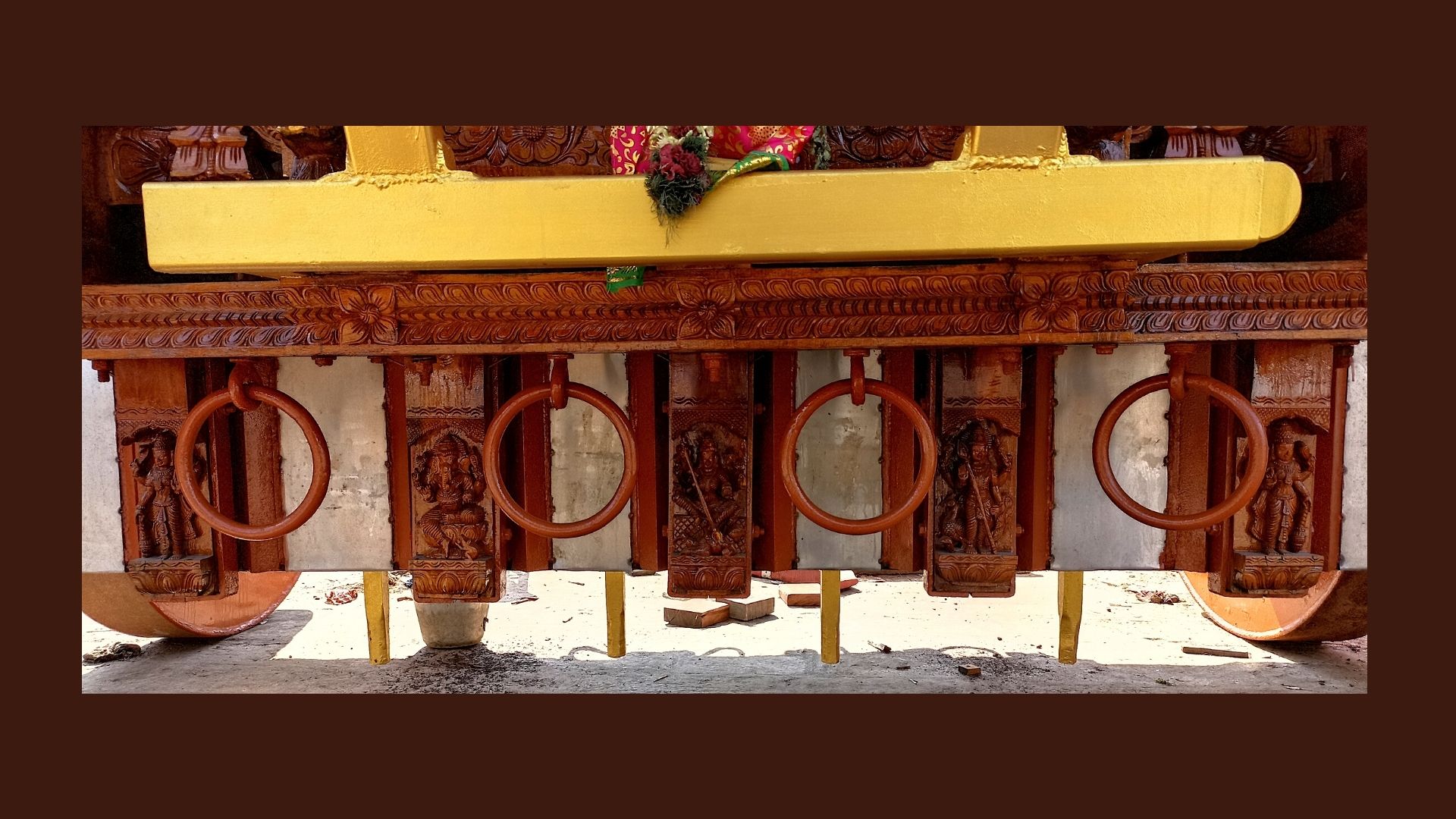
I remember Thiruvizha from my childhood days. My mother Aravindakumari and grandmother Lalitha Bai used to make two lamps made of rice flour and jaggery with ghee and wicks. Two raw onions and sweet Pongal were part of the fare. A silver kooja would also be used. All the unmarried kids would be made to hold it on their head on a simmadu (a head towel placed like a thattu idli) and just slowly spin around. This was later offered in the temple and brought back. We used to eat this ' jothipindi ' . Great granny Rajalakshmi had begun this practice in our family, which has been in Coimbatore for about IOS years thus far (since 1912).
The festival day would see a big power cut for the electric lines that had to be removed in order to facilitate the movement of the Koniamman Temple Car. Hundreds of devotees used to draw the car and a team would take care of the brakes, turning points as well. The streets used to be full of people. Panju mittai, kutchi ice-cream, ice fruit, soda, mini giant wheels, two girl dolls doing ring a ring a roses, balloons, whistles, snacks, free distribution of butter milk and snacks would fill up the streets. Residents would be waiting on both the sides of the streets and the side lanes eagerly. Koniamman, the Selva Raja Rajeswari of Coimbatore, would be visiting everyone that day. Therefore, they would be ready with flowers, fruits, sweets, turmeric pods, betel leaves and a lot of devotion.
The finely caparisoned car would be a sight to behold. It's tall and stately appearance with colorful festoons added to its majesty. The wooden parts with carvings depicting the culture of the region. It's huge wooden wheels which would stop and creak while brakes get applied. The processional deity would be on the top, and the Aarati plate would go up and come down many times. Crowds singing praises of the deity will add to the ecstasy of the day. The policemen of the city and their efforts to maintain calm and order at the time of this event have been part of our times. The tall headdresses worn by them during the yonder years added to the flavour of the festival. Kids used to enjoy the day, which was full of sweets and joy. While the elders would be in eager anticipation, to receive the grace of Koniamman.
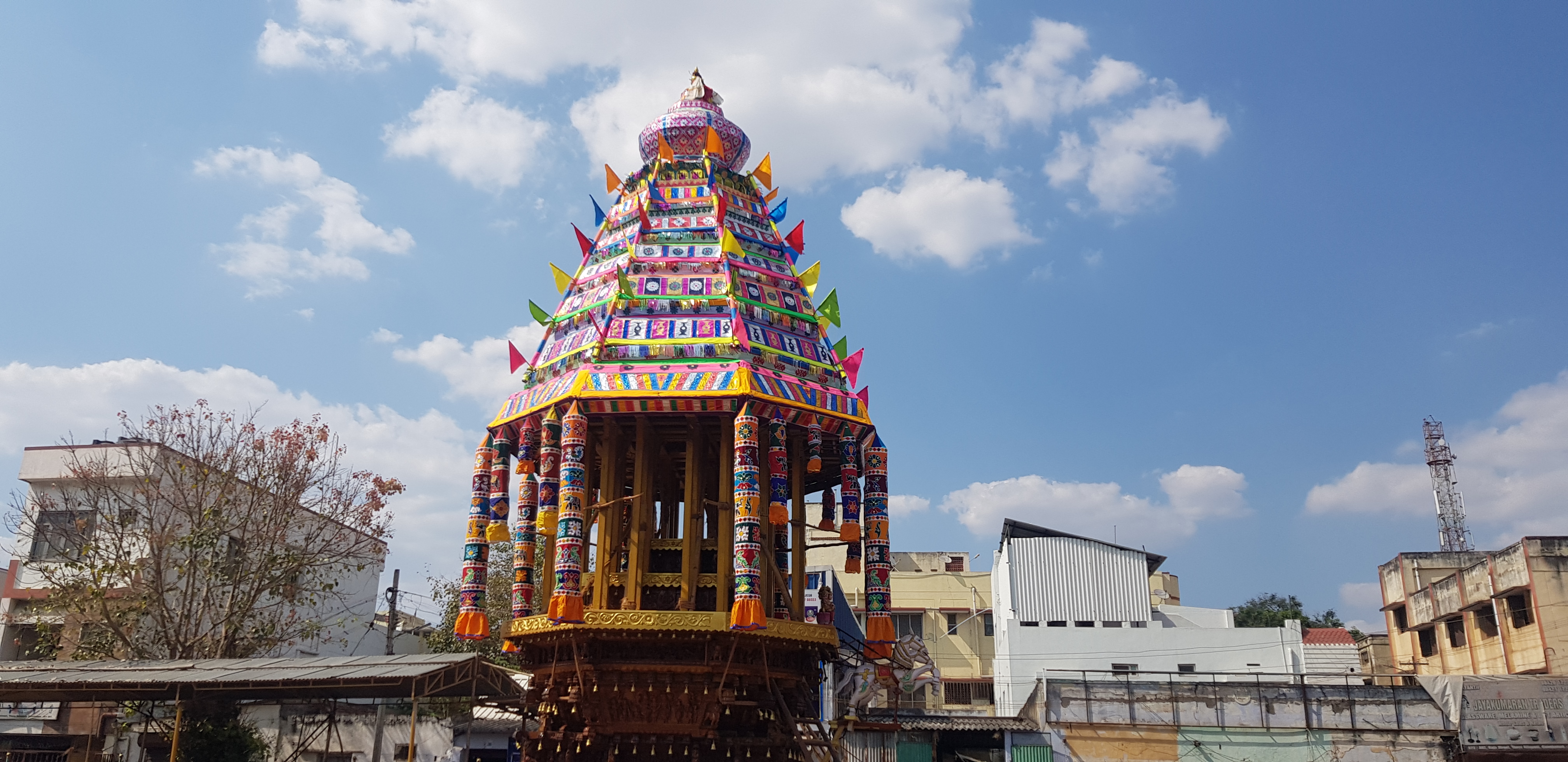
I still remember our old house, 'Raju Bhavan' on Vysial Street. My great grandfather, PARaju Chettiar, would be ready to seek the blessings of the Goddess. All ofus used to be there along with him. Our house verandah would be filled with members of the family. The deity used to stop briefly in front of our house and car ropes used for drawing would be lowered. Great grandfather P.A.Raju Chettiar would go near the car, look up, fold his hands and offer his prayers. We used to follow him. An arati used to be done, and it used to come down. He used to use his hands and feel the warmth of the flame and take it to his face . The kumkumam and vibhuti offered used to be applied on his forehead, which was already ordained with a red namam. My fair complexioned great grandfather would be in his flowing khadi clothes and he used to sport a kuft on his head. He would have removed the angavastram (shoulder cloth) and worn it around his waist as a mark of devotion. The family members and household help, including Avasaram (Dhandayudham) used to accompany him. It used to be a great moment for alof uss. We used to stand on our doorstep and watch the car till it moved to the next street. We used to invite all our local relatives to witness the Car Festival.
The Guru Hotel family was always associated with the temple and the car festival. The Managing Director of Shobha Cloth Centre Jafer Ali used to sponsor the serial light settings for the same. The troupe under one Karunanidhi of Thiruvarur used to install the light settings. Kuppuraj, the manager of Shobha Cloth Centre and the rest of the staff used to offer their prayers to the deity at Oppanakkara Street. Rajendra Textiles P. Krishnan and members from all religious groups used to receive the Koniamman Temple Car in Oppanakkara Street. K. G. Mariappan of Guru Hotel used to play an important role during those years.
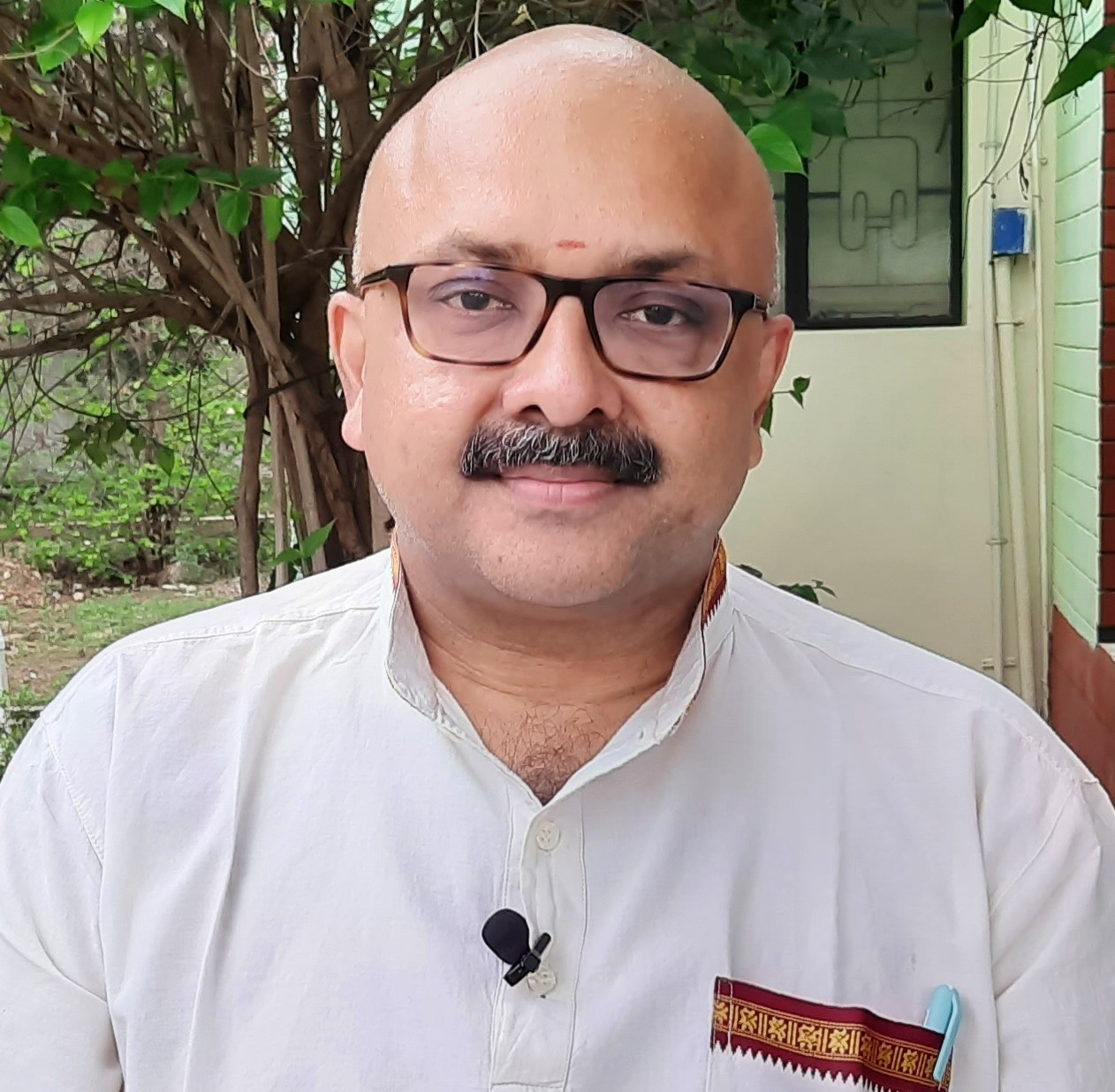 Mr. Rajesh Govindarajulu is one of the founding members of the Verandah Club Pvt. Ltd. He is a leading columnist, historian, jeweler, entrepreneur, and a heritage enthusiast who is earnestly working to revive the past in the light of the present. Experiential learning about the history of Coimbatore is his main course of interest and he is also a panel member of many colleges in the city.
Mr. Rajesh Govindarajulu is one of the founding members of the Verandah Club Pvt. Ltd. He is a leading columnist, historian, jeweler, entrepreneur, and a heritage enthusiast who is earnestly working to revive the past in the light of the present. Experiential learning about the history of Coimbatore is his main course of interest and he is also a panel member of many colleges in the city.
NEXT ARTICLE
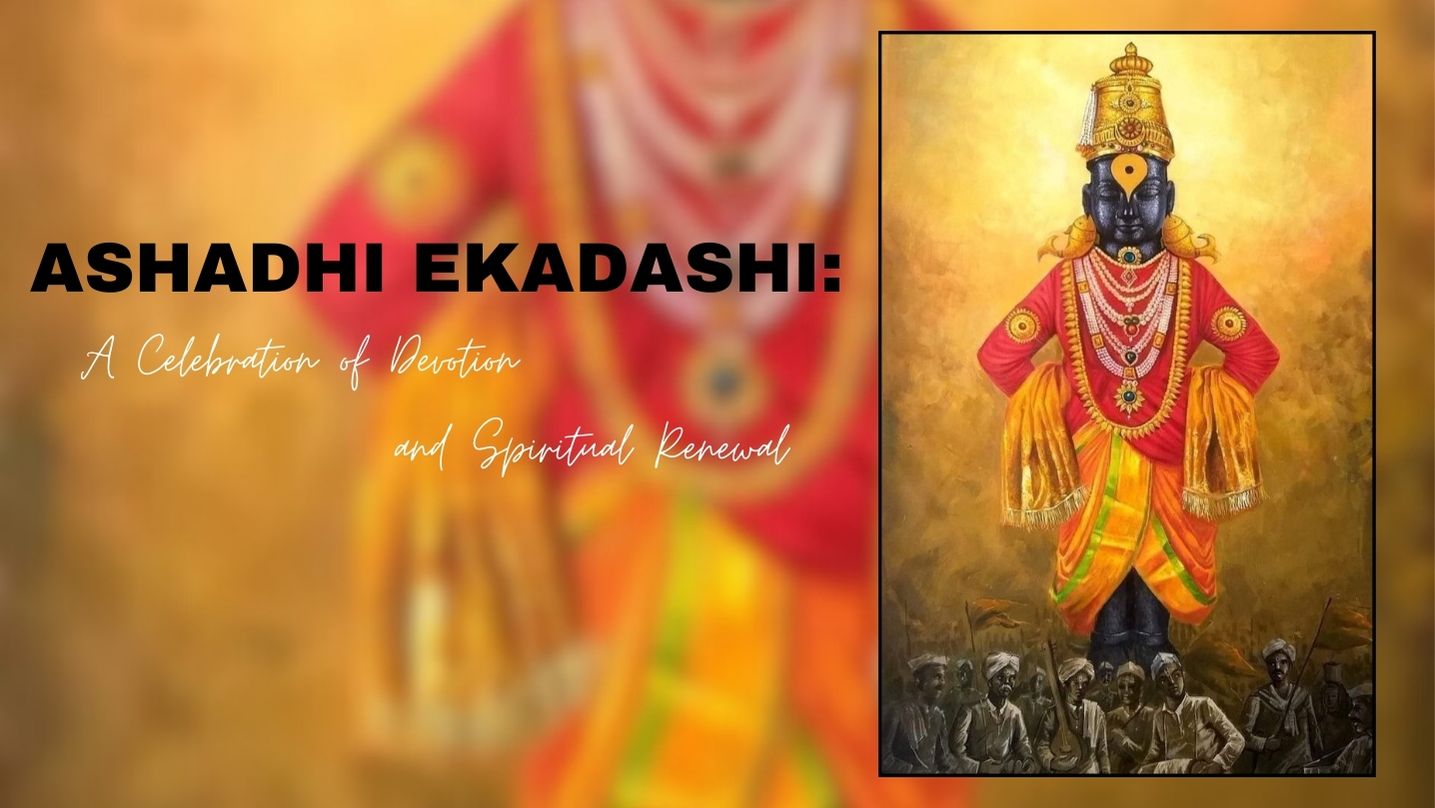
Ashadhi Ekadashi, also known as Shayani Ekadashi, falls on the 11th lunar day (Ekadashi) of the bright fortnight (Shukla Paksha) of the Hindu month of...
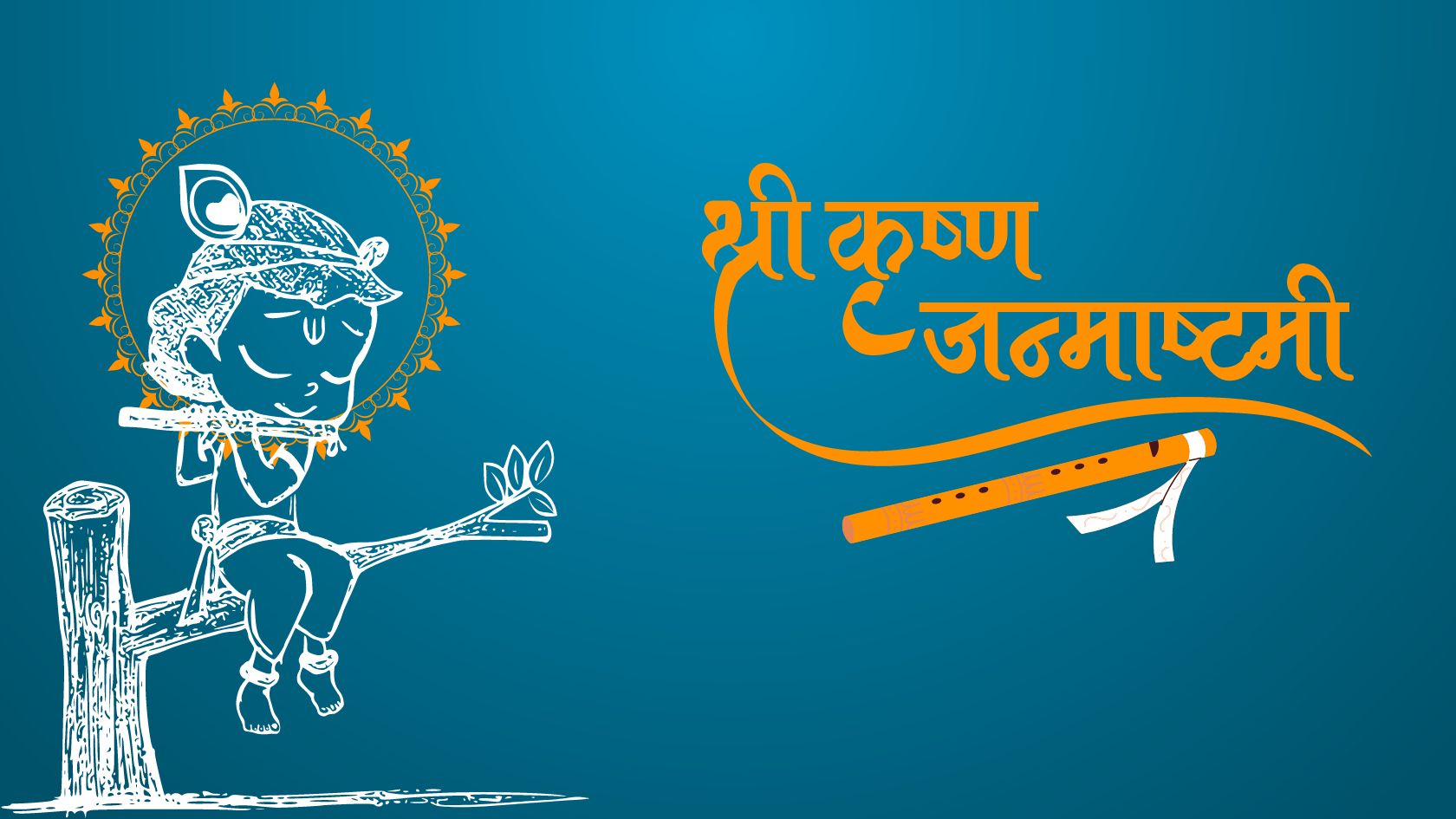
Every year, as the monsoon rains dance on the fields of India, an ancient story unfolds in the hearts of millions. It is the story of Krishna, the bel...
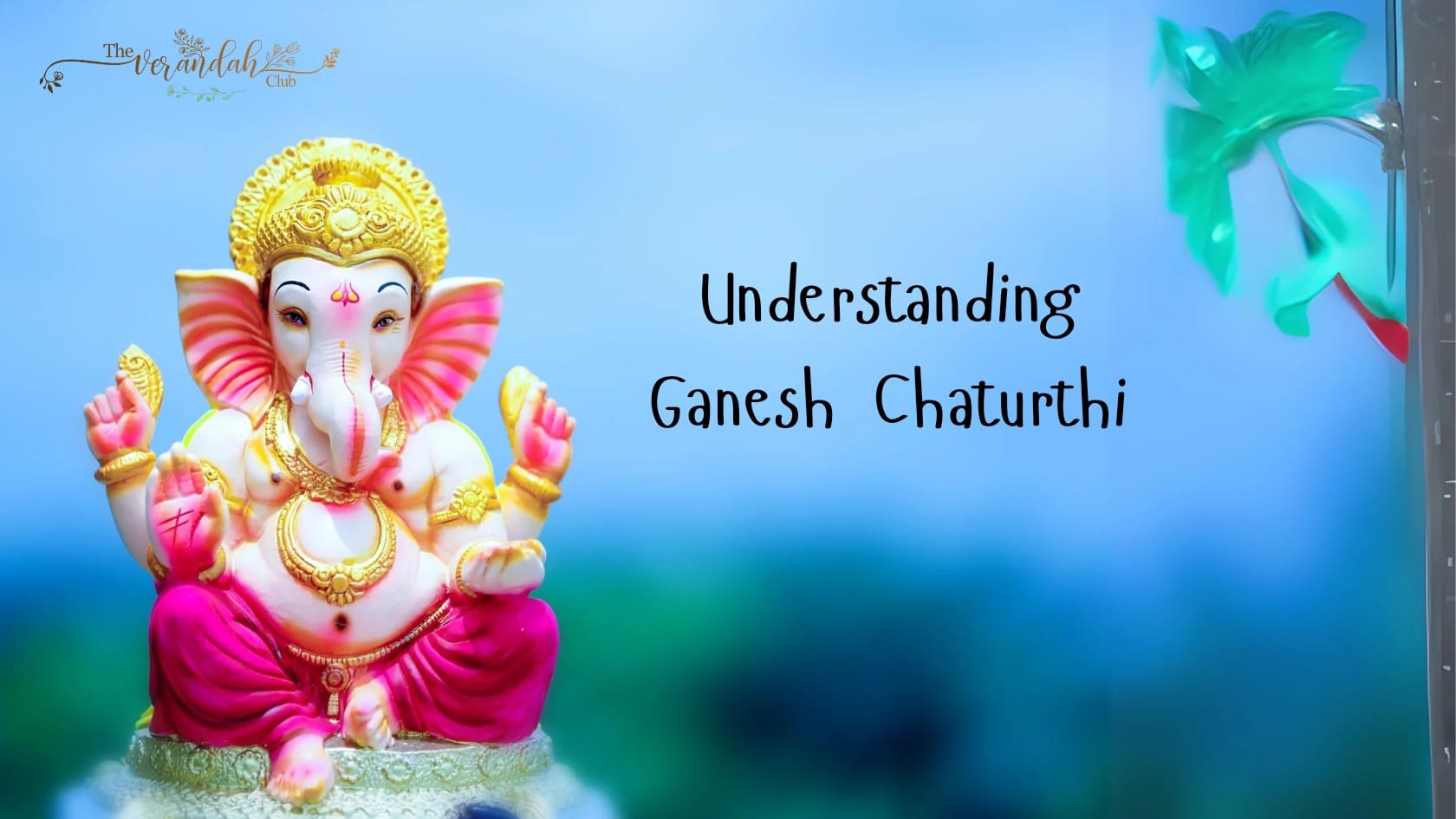
Ganesh Chaturthi, also known as Vinayaka Chaturthi, is a significant Hindu festival that honors Lord Ganesha, the deity revered as the remover of obst...